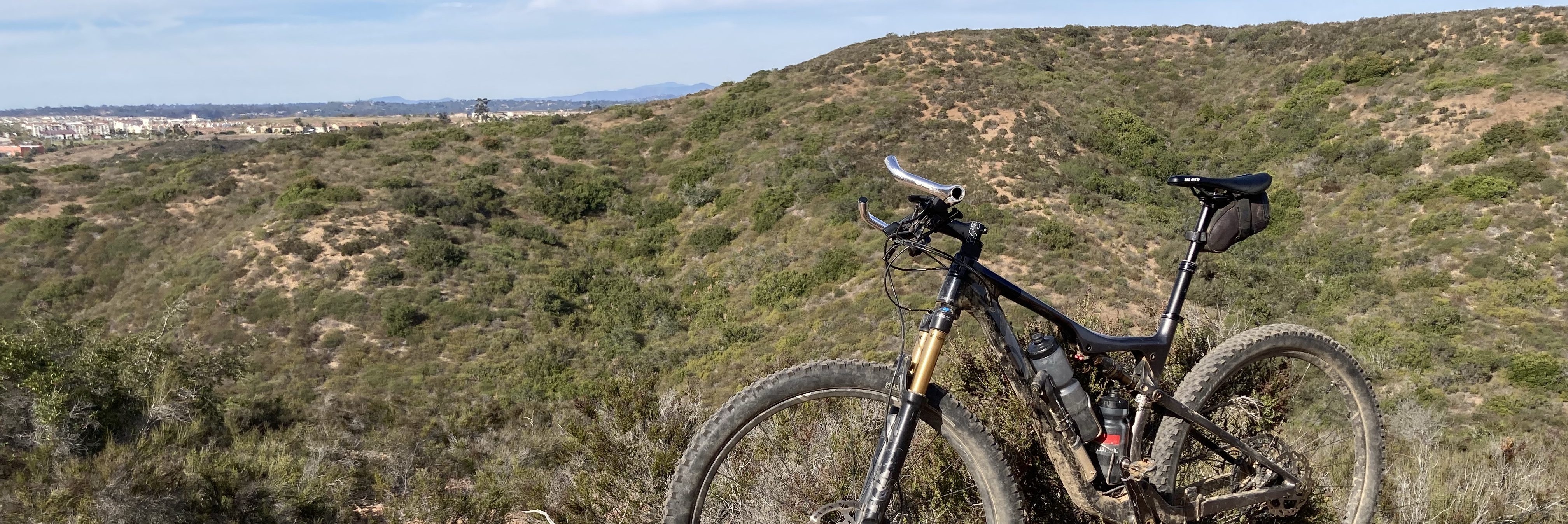The most recent hardtail MTB in my collection was light. Really light to my way of thinking. I don’t think I ever had a single thought to replace a part for weight purposes.
And I had gotten stupid-light out of my system some time ago.
But my oldest hardtail had a titanium handlebar on it. [Edited: The Titek bar was cool stuff when it came out. I thought mine was the 150 grams model when I wrote this. But the link to Bike Pro catalog copy shows that the bar end reinforcement inserts, still present on my bar, came with the lighter handlebar. ]

Old school narrow (555 mm) and with a plastic adapter required to fit the (now outdated clamp size) stem. Aluminum inserts to support bar ends. It was basically a piece of titanium tubing cut to length. It’s held up! And is doing duty on a Frankenstein ebike. [Edited: I probably got mine a few years earlier but in 1996 the fancy one was $73, or $140 in 2022 dollars adjusted for inflation. The PG bar was $45, or $86.]

Dang that was a comfortable bar. Did I mention it was made of titanium?
I found a relatively cheap Ti bar on Amazon and ordered it up. $85. Mainline bike parts titanium bars run $250 or more. The Ritchey WCS aluminum bars run $70-75.

Above, the TiTo bar is pictured with my length tester Ritchey Comp 20mm riser and the original Orbea bar, now cut to length. The new bike was spec’d with a carbon bar but this is most certainly an aluminum one. And when I had them all off….a surprisingly heavy one. Not cool, Orbea, not cool.
The Ritchey is what I would call a practical bar. 290 grams when cut to this length. That’s a reasonable weight, and these tend to be tough and stiff. The Orbea one weighs 327 grams, when cut down by about three inches from the original. That’s a heavy bar in my estimation. The Ti one comes in at 240 grams, which seems reasonable for an inexpensive Ti bar.
I get a bar weight in with the lower end of carbon bars and Ti toughness. For $85. Not bad, not bad.
On the first test ride I did not notice much difference in stiffness or vibration damping. On the second ride I started thinking it is actually stiffer than the other two aluminum ones. More time will tell, especially if I swap back and forth.
The TiTo bar has about a 3 degree sweep, which I prefer to the 5-7 degree on Ritchey and other bars. It has minimal rise. In one orientation it looks flat to me, but if you turn it over it’s dropped ever so slightly. Maybe 8mm at most. Very subtle asymmetry.

3 thoughts on “If you haven’t replaced something with Ti are you even a bike geek?”